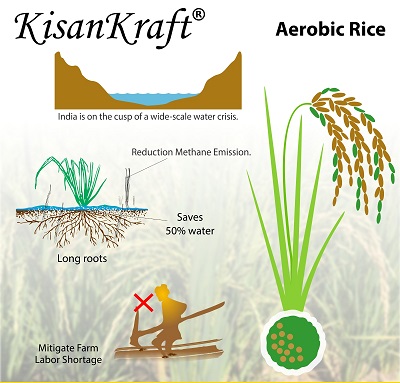Green Manuring is Essential for Farmers
Agriculture Scientists recommend “Green Manuring” a practice of soil enrichment by mixing the fresh green tissue into the soil. This green manure can either be grown on-site or brought from a distance. This addition of organic matter and nutrients improves soil fertility, structure, bio-diversity and ultimately improves crop yield.
There are two types of green manuring based on the source of green tissues.
Green Manuring on-site:
In this method, green manure crops are grown in the field itself where it should be incorporated before green manure crop flowers. (a) These crops can be grown as a pure crop and incorporated before the sowing of the main crop. (b) They can be inter-cropped with a standing main crop and incorporated into the soil during harvest time; e.g. Paddy can be grown with Azola. Some examples of in-situ green manure crops are Sunhemp, Dhaincha, Urd, Mung, Cowpea, Berseem, etc.
Green Leaf Manuring:
In this method, green leaves and tender twigs of trees, shrubs, and herbs from elsewhere are incorporated into the soil. Plants on bunds, waste lands and nearby forest areas are a source of green leaf manures. Example: Sesbania, Neem, Glyricidia, Karanji, Gulmohur, Subabul, and other shrubs.
Green manuring reduces the need for artificial fertilizers because it absorbs nutrients from the lower layer and leaves them in the surface when ploughed. It prevents the leaching of nutrients. It harbors Nitrogen-fixing bacteria forms nodules in roots and brings atmospheric Nitrogen into the soil. It also increases the solubility of lime phosphates, important trace elements, etc., through the activity of the soil microorganisms and by producing organic acids during decomposition.
Green manuring improves soil structure by formation of crumbs in heavy soils leading to aeration and drainage; regulating the soil temperature and preventing erosive action of rain and water by forming a canopy cover over the soil. It reclaims saline and alkaline soils. These things help improve the structure of soil and improve the water holding capacity.
Green manuring improves soil bio-diversity (growth of beneficial microbes and other soil organisms) by adding organic matter to the soil, which serves as a source of food and energy for the microbes. These microbes not only decompose the incorporated green tissues but also result in the release of plant nutrients in available forms for use by the crops.
Green manuring improves crop yield by increasing biomass and decreasing weeds, pests, and disease incidence as well as by promoting natural enemies.
It is very important that the farmers incorporate the green manure immediately after first rains, and at least 15-days before the main sowing. Otherwise, under rainfed conditions, the germination and growth of succeeding crop may be affected due to depletion of moisture for the growth and decomposition of green manure. Farmers must maintain proper moisture content before sowing the main crop.
Lack of awareness of the benefits of Green Manuring is a major concern for agriculture in India. The cost involved in green manuring can be reduced by utilization of farm equipment like granule spreaders to broadcast seeds for in-situ or Chaff Cutters in green leaf manuring and inter-cultivators or tractor drawn rotavator and disc harrows for incorporation. The benefits far outweigh these costs.
This article has been written by Mr. Sumantha Holla and Ms. Sowjanya MS. Both are Ph.D. Scholars at UAS Bangalore and working at KisanKraft Limited’s R&D division.


